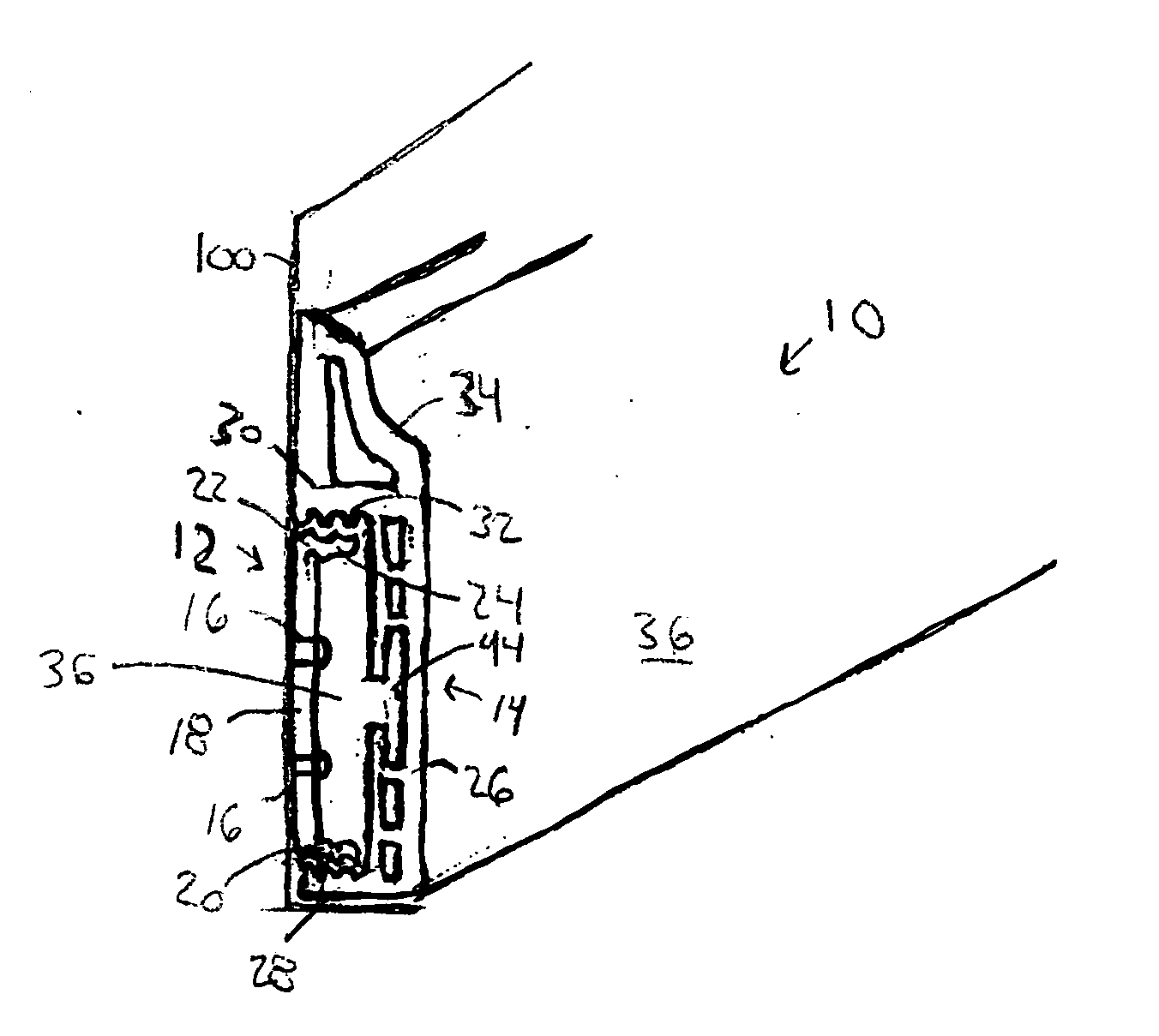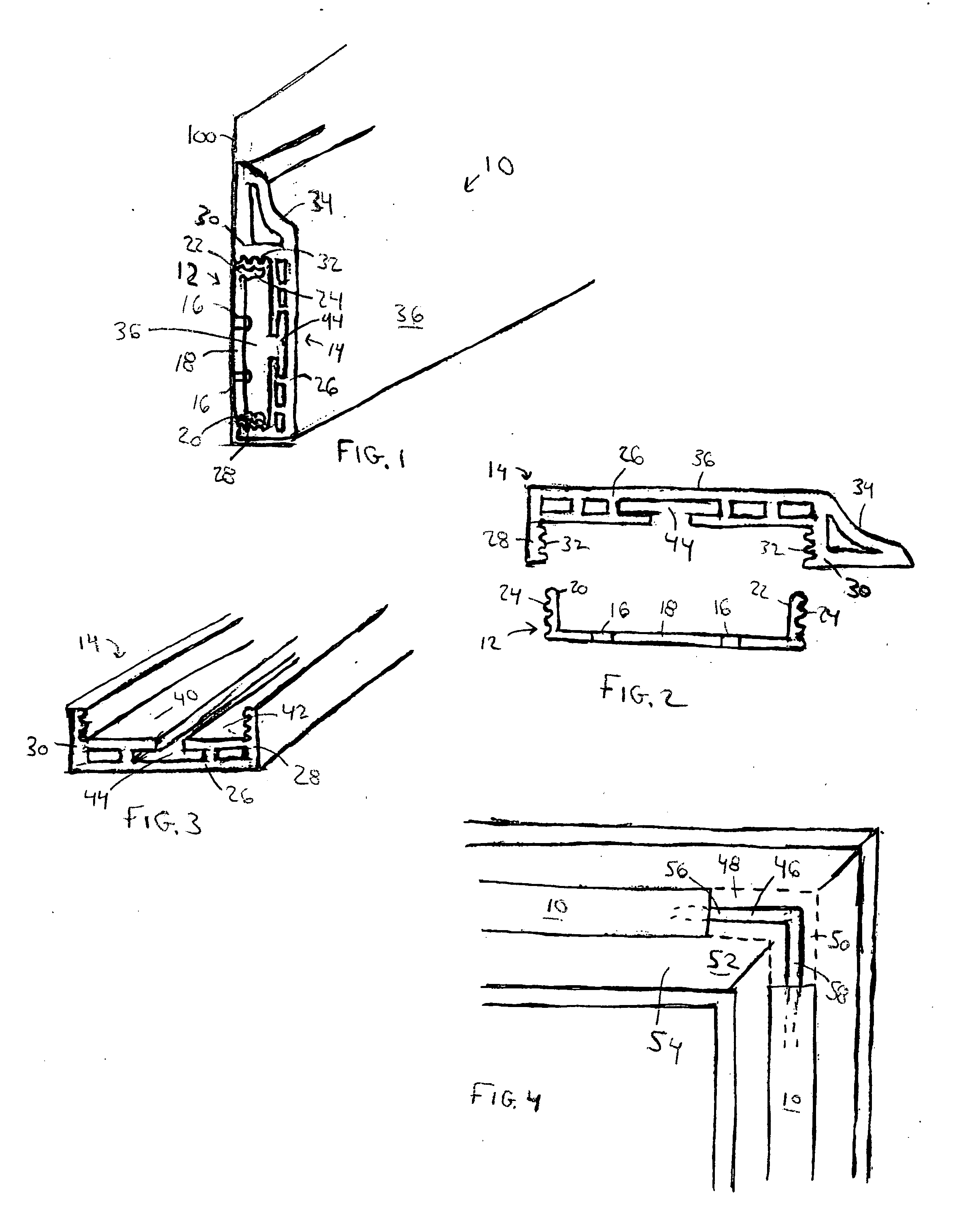Two-part composite molding and trim with raceway
a technology of raceways and composite molding, which is applied in the direction of walls, construction, building components, etc., can solve the problems of labor-intensive installation and finishing of interior moldings, no time saving with one product, and inability to achieve the effect of easy surface treatment, easy installation, and comparably priced
- Summary
- Abstract
- Description
- Claims
- Application Information
AI Technical Summary
Benefits of technology
Problems solved by technology
Method used
Image
Examples
Embodiment Construction
[0022] A molding 10 of the present invention is shown assembled in FIG. 1 applied to a wall 100, and disassembled in FIG. 2. The molding 10 includes a base 12 and a face 14. The molding 10 is configured for attachment of the base 12 to the wall 100 (or other desired structure). Means for attaching the base 12 to the wall 100 may be nails (for permanent attachment) or screws (for removable attachment), or other means, such as bolts, staples, adhesive, or the like. Preferably, the base 12 is screwed to the wall 100 through one or more attachment ports 16.
[0023] The base 12 is preferably configured in the shape of a channel with main body 18, first sidewall 20, and second sidewall 22. The base 12 may be fabricated of one or more pieces of selectable length. The base 12 may be fabricated of a metallic material or a non-metallic material. The base 12 is preferably fabricated of a polymeric material such as a thermoplastic including, but not limited to, polystyrene, polyethylene, polypro...
PUM
 Login to View More
Login to View More Abstract
Description
Claims
Application Information
 Login to View More
Login to View More - R&D
- Intellectual Property
- Life Sciences
- Materials
- Tech Scout
- Unparalleled Data Quality
- Higher Quality Content
- 60% Fewer Hallucinations
Browse by: Latest US Patents, China's latest patents, Technical Efficacy Thesaurus, Application Domain, Technology Topic, Popular Technical Reports.
© 2025 PatSnap. All rights reserved.Legal|Privacy policy|Modern Slavery Act Transparency Statement|Sitemap|About US| Contact US: help@patsnap.com


